-
 Bitcoin
Bitcoin $85,287.1509
1.00% -
 Ethereum
Ethereum $1,609.9706
1.61% -
 Tether USDt
Tether USDt $0.9998
-0.01% -
 XRP
XRP $2.0809
0.94% -
 BNB
BNB $590.3586
-0.66% -
 Solana
Solana $138.9385
4.40% -
 USDC
USDC $0.9999
0.00% -
 Dogecoin
Dogecoin $0.1581
1.00% -
 TRON
TRON $0.2414
-0.35% -
 Cardano
Cardano $0.6228
0.95% -
 UNUS SED LEO
UNUS SED LEO $9.3122
2.94% -
 Chainlink
Chainlink $12.7844
2.03% -
 Avalanche
Avalanche $19.7704
4.55% -
 Stellar
Stellar $0.2460
1.89% -
 Toncoin
Toncoin $2.9673
-0.95% -
 Shiba Inu
Shiba Inu $0.0...01219
0.46% -
 Hedera
Hedera $0.1657
0.90% -
 Sui
Sui $2.1438
1.64% -
 Bitcoin Cash
Bitcoin Cash $335.6193
-1.75% -
 Hyperliquid
Hyperliquid $18.0540
10.21% -
 Polkadot
Polkadot $3.7376
1.23% -
 Litecoin
Litecoin $75.7804
-0.31% -
 Bitget Token
Bitget Token $4.5329
2.64% -
 Dai
Dai $0.9999
-0.02% -
 Ethena USDe
Ethena USDe $0.9991
0.00% -
 Pi
Pi $0.6455
4.32% -
 Monero
Monero $212.5532
-1.94% -
 Uniswap
Uniswap $5.2614
1.97% -
 Pepe
Pepe $0.0...07374
2.49% -
 OKB
OKB $50.8255
0.96%
What are the main encryption algorithms of the blockchain?
Hash functions like SHA-256 ensure blockchain integrity, while ECDSA and RSA secure transactions, and AES encrypts data; ZKPs enhance privacy with proofs like zk-SNARKs.
Apr 12, 2025 at 12:49 am
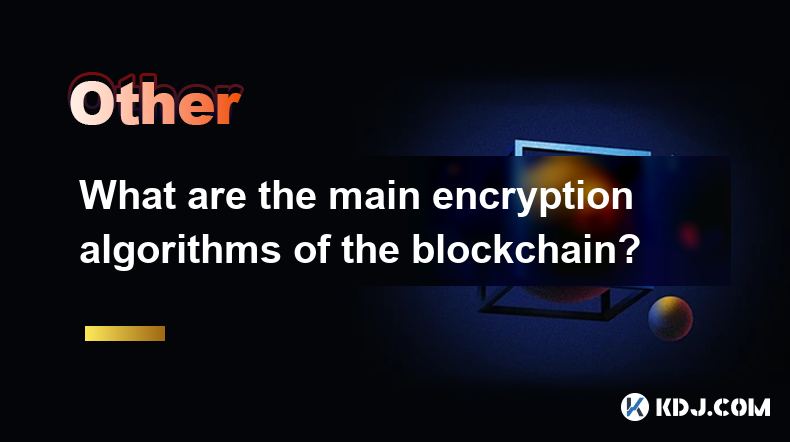
Blockchain technology is fundamentally rooted in cryptographic principles, ensuring the security and integrity of the data it manages. The encryption algorithms used in blockchain systems are crucial for maintaining the privacy and security of transactions and the overall network. This article delves into the main encryption algorithms utilized in blockchain technology, exploring their functionalities and importance.
Hash Functions
Hash functions are a cornerstone of blockchain encryption. They are used to create a unique digital fingerprint of data, which is essential for maintaining the integrity of the blockchain. The most commonly used hash function in blockchain is the SHA-256 (Secure Hash Algorithm 256-bit). SHA-256 takes an input and produces a 256-bit (32-byte) hash value. This hash value is unique to the input data, and even a minor change in the input results in a completely different hash output.
In blockchain, hash functions are used to link blocks together. Each block contains a hash of the previous block, creating a chain of blocks that cannot be altered without changing the subsequent hashes. This property is vital for ensuring the immutability of the blockchain. Another important hash function used in some blockchain systems is RIPEMD-160, which produces a 160-bit hash and is often used in conjunction with SHA-256 for additional security layers.
Digital Signatures
Digital signatures are another critical component of blockchain encryption, used to verify the authenticity and integrity of transactions. The most prevalent algorithm for digital signatures in blockchain is the Elliptic Curve Digital Signature Algorithm (ECDSA). ECDSA is based on elliptic curve cryptography (ECC), which provides strong security with shorter key lengths compared to other cryptographic systems like RSA.
To understand how ECDSA works in blockchain, consider the following steps involved in creating and verifying a digital signature:
- Key Generation: The user generates a pair of keys: a private key and a public key. The private key is used for signing transactions, while the public key is used for verification.
- Signing: When a user wants to sign a transaction, they use their private key to create a digital signature. This signature is a function of the transaction data and the private key.
- Verification: Anyone can verify the signature using the sender's public key. If the signature is valid, it confirms that the transaction data has not been altered and that it was indeed signed by the owner of the private key.
ECDSA is favored in blockchain due to its efficiency and the smaller key sizes, which are beneficial for resource-constrained environments like mobile devices.
Public-Key Cryptography
Public-key cryptography, also known as asymmetric cryptography, is essential for secure communication in blockchain networks. It involves the use of a pair of keys: a public key, which is shared openly, and a private key, which is kept secret. The most common public-key encryption algorithm used in blockchain is RSA (Rivest-Shamir-Adleman), although ECDSA is also used for this purpose.
In blockchain, public-key cryptography is used for various purposes, including:
- Address Generation: Public keys are used to generate blockchain addresses, which are used to receive funds. The address is derived from the public key through a series of hash functions.
- Encryption: Public keys can be used to encrypt messages or data that can only be decrypted by the corresponding private key, ensuring secure communication.
- Digital Signatures: As mentioned earlier, public keys are used to verify the signatures of transactions.
RSA is widely used due to its robustness and the ease of implementing key management systems. However, due to the larger key sizes required for equivalent security levels compared to ECC, RSA is less favored in blockchain applications where efficiency is a priority.
Symmetric Encryption
While less commonly discussed in the context of blockchain, symmetric encryption plays a role in securing certain aspects of blockchain networks. Symmetric encryption uses the same key for both encryption and decryption, making it faster than asymmetric encryption but requiring a secure method for key distribution.
The most commonly used symmetric encryption algorithm in blockchain is AES (Advanced Encryption Standard). AES is used to encrypt data at rest or in transit within the blockchain network, ensuring that sensitive information remains confidential. AES comes in several key lengths, with AES-256 being the most secure and commonly used in blockchain applications.
In blockchain, AES might be used to encrypt sensitive data within transactions or to secure communication channels between nodes. However, due to the need for key distribution, symmetric encryption is typically used in conjunction with asymmetric encryption to ensure that keys can be securely exchanged.
Zero-Knowledge Proofs
Zero-knowledge proofs (ZKPs) are a more advanced cryptographic technique used in some blockchain systems to enhance privacy and security. ZKPs allow one party to prove to another that a statement is true without revealing any information beyond the validity of the statement itself. The most notable implementation of ZKPs in blockchain is found in zk-SNARKs (Zero-Knowledge Succinct Non-Interactive Arguments of Knowledge), used in cryptocurrencies like Zcash.
zk-SNARKs enable transactions to be verified without revealing the sender, receiver, or transaction amount, providing a high level of privacy. The process of using zk-SNARKs involves several complex steps:
- Setup: A trusted setup phase generates public parameters used for proofs and verification.
- Proof Generation: The prover generates a proof that a statement is true without revealing the statement itself.
- Verification: The verifier checks the proof using the public parameters to confirm the statement's validity without learning any additional information.
While ZKPs add significant privacy benefits to blockchain systems, they also increase computational complexity and require careful implementation to ensure security.
Frequently Asked Questions
1. How do hash functions contribute to the security of blockchain?
Hash functions contribute to blockchain security by ensuring data integrity and immutability. Each block in the blockchain contains a hash of the previous block, creating a chain that is extremely difficult to alter. If any data in a block is changed, the hash of that block changes, which in turn changes all subsequent hashes, making unauthorized modifications easily detectable.
2. Why is ECDSA preferred over RSA in many blockchain applications?
ECDSA is preferred over RSA in many blockchain applications because it offers equivalent security with shorter key lengths, resulting in faster computations and lower resource requirements. This makes ECDSA more suitable for environments where efficiency is critical, such as in mobile devices and IoT applications.
3. What role does symmetric encryption play in blockchain?
Symmetric encryption, such as AES, is used in blockchain to secure data at rest or in transit. It ensures that sensitive information within transactions or communications between nodes remains confidential. However, due to the need for secure key distribution, symmetric encryption is often used in conjunction with asymmetric encryption in blockchain systems.
4. How do zero-knowledge proofs enhance privacy in blockchain?
Zero-knowledge proofs, like zk-SNARKs, enhance privacy in blockchain by allowing transactions to be verified without revealing the sender, receiver, or transaction amount. This means that while the network can confirm the validity of transactions, the details of those transactions remain private, providing a high level of anonymity and security.
Disclaimer:info@kdj.com
The information provided is not trading advice. kdj.com does not assume any responsibility for any investments made based on the information provided in this article. Cryptocurrencies are highly volatile and it is highly recommended that you invest with caution after thorough research!
If you believe that the content used on this website infringes your copyright, please contact us immediately (info@kdj.com) and we will delete it promptly.
- Aave [AAVE] registers a 1.11% uptick, trailing slightly behind its 2.91% gain for the week.
- 2025-04-20 00:35:12
- As Investor Confidence Begins to Return in 2025, the Hunt for Undervalued Altcoins Has Intensified
- 2025-04-20 00:35:12
- The next challenge in crypto: Liquidity fragmentation
- 2025-04-20 00:30:14
- Just Released: Global Cash & Coin Deposit Bags Market Study by HTF MI
- 2025-04-20 00:30:14
- Meme coin dogwifhat (WIF) is back in the spotlight as crypto markets begin to show signs of life.
- 2025-04-20 00:30:13
- The Chill That Pays the Bills: Why Arctic P.A.C.O. at $0.000095 Might Be the Coolest Buy of 2025, While Floki and Gohome Stay Strong
- 2025-04-20 00:30:13
Related knowledge

Can ICOs in the blockchain space still make money?
Apr 17,2025 at 08:29pm
The landscape of Initial Coin Offerings (ICOs) in the blockchain space has evolved significantly since their peak in 2017 and 2018. Despite the increased regulatory scrutiny and the rise of alternative fundraising methods like Security Token Offerings (STOs) and Initial Exchange Offerings (IEOs), ICOs can still be a viable way to raise funds and generat...

Can the application of blockchain in supply chain finance bring benefits?
Apr 15,2025 at 04:00pm
Can the application of blockchain in supply chain finance bring benefits? The integration of blockchain technology into supply chain finance has garnered significant attention in the cryptocurrency and financial sectors. This article explores how blockchain can potentially revolutionize supply chain finance, detailing its benefits and providing a compre...
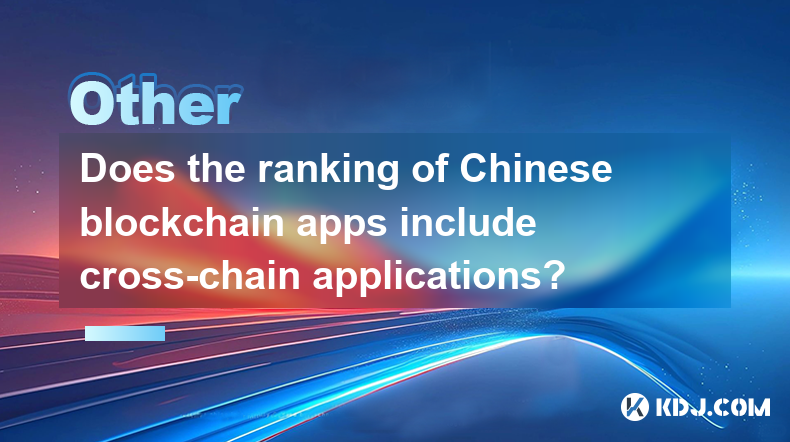
Does the ranking of Chinese blockchain apps include cross-chain applications?
Apr 14,2025 at 04:00pm
The ranking of Chinese blockchain apps is a comprehensive evaluation that takes into account various aspects such as user base, transaction volume, and technological innovation. A pertinent question arises regarding whether these rankings include cross-chain applications. Cross-chain applications, which allow different blockchain networks to interact an...
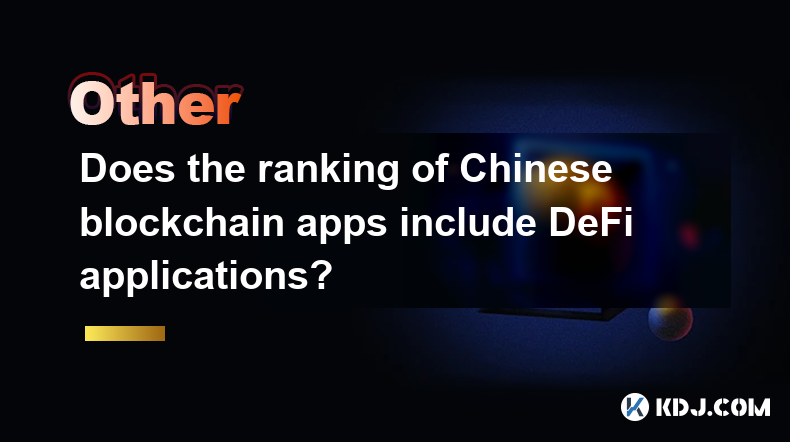
Does the ranking of Chinese blockchain apps include DeFi applications?
Apr 15,2025 at 06:57am
The ranking of Chinese blockchain apps is a comprehensive list that showcases the most popular and influential applications within the cryptocurrency ecosystem. One question that often arises is whether these rankings include DeFi applications. To answer this, we need to delve into the specifics of how these rankings are compiled and what types of appli...
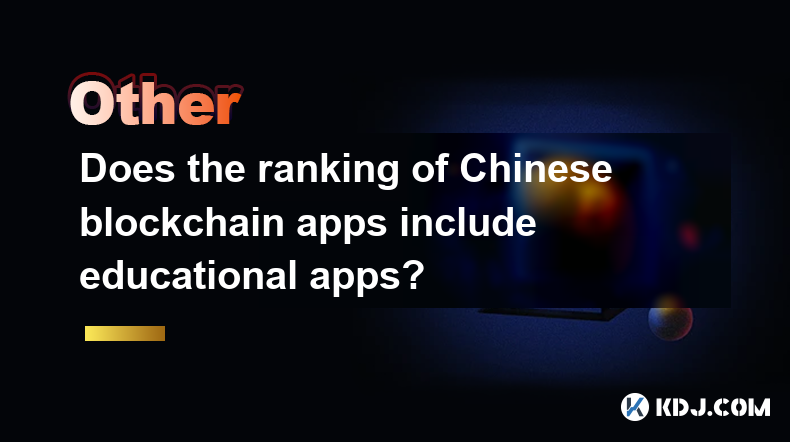
Does the ranking of Chinese blockchain apps include educational apps?
Apr 16,2025 at 03:35am
The ranking of Chinese blockchain apps often includes a variety of categories, from finance and gaming to social networking and beyond. One question that frequently arises is whether these rankings include educational apps. To address this, we need to delve into the specifics of how blockchain apps are categorized and ranked in China, and whether educat...
Does the ranking of Chinese blockchain apps include enterprise-level applications?
Apr 15,2025 at 06:42am
The ranking of Chinese blockchain apps often includes a variety of applications, ranging from consumer-focused to enterprise-level solutions. Understanding the scope and criteria for these rankings is essential to determine if enterprise-level applications are included. This article delves into the specifics of how Chinese blockchain app rankings are co...

Can ICOs in the blockchain space still make money?
Apr 17,2025 at 08:29pm
The landscape of Initial Coin Offerings (ICOs) in the blockchain space has evolved significantly since their peak in 2017 and 2018. Despite the increased regulatory scrutiny and the rise of alternative fundraising methods like Security Token Offerings (STOs) and Initial Exchange Offerings (IEOs), ICOs can still be a viable way to raise funds and generat...

Can the application of blockchain in supply chain finance bring benefits?
Apr 15,2025 at 04:00pm
Can the application of blockchain in supply chain finance bring benefits? The integration of blockchain technology into supply chain finance has garnered significant attention in the cryptocurrency and financial sectors. This article explores how blockchain can potentially revolutionize supply chain finance, detailing its benefits and providing a compre...

Does the ranking of Chinese blockchain apps include cross-chain applications?
Apr 14,2025 at 04:00pm
The ranking of Chinese blockchain apps is a comprehensive evaluation that takes into account various aspects such as user base, transaction volume, and technological innovation. A pertinent question arises regarding whether these rankings include cross-chain applications. Cross-chain applications, which allow different blockchain networks to interact an...

Does the ranking of Chinese blockchain apps include DeFi applications?
Apr 15,2025 at 06:57am
The ranking of Chinese blockchain apps is a comprehensive list that showcases the most popular and influential applications within the cryptocurrency ecosystem. One question that often arises is whether these rankings include DeFi applications. To answer this, we need to delve into the specifics of how these rankings are compiled and what types of appli...

Does the ranking of Chinese blockchain apps include educational apps?
Apr 16,2025 at 03:35am
The ranking of Chinese blockchain apps often includes a variety of categories, from finance and gaming to social networking and beyond. One question that frequently arises is whether these rankings include educational apps. To address this, we need to delve into the specifics of how blockchain apps are categorized and ranked in China, and whether educat...

Does the ranking of Chinese blockchain apps include enterprise-level applications?
Apr 15,2025 at 06:42am
The ranking of Chinese blockchain apps often includes a variety of applications, ranging from consumer-focused to enterprise-level solutions. Understanding the scope and criteria for these rankings is essential to determine if enterprise-level applications are included. This article delves into the specifics of how Chinese blockchain app rankings are co...
See all articles
























































































